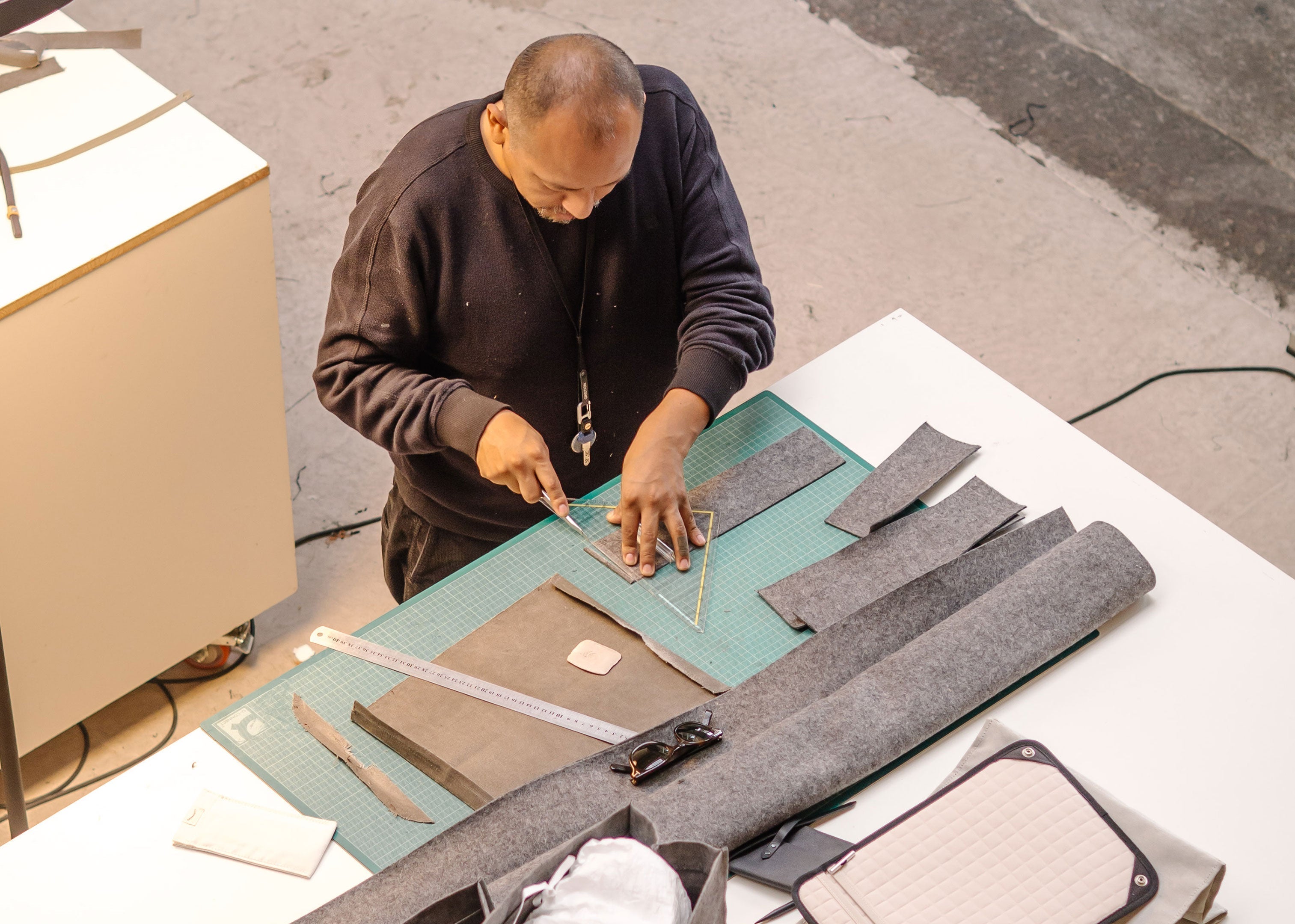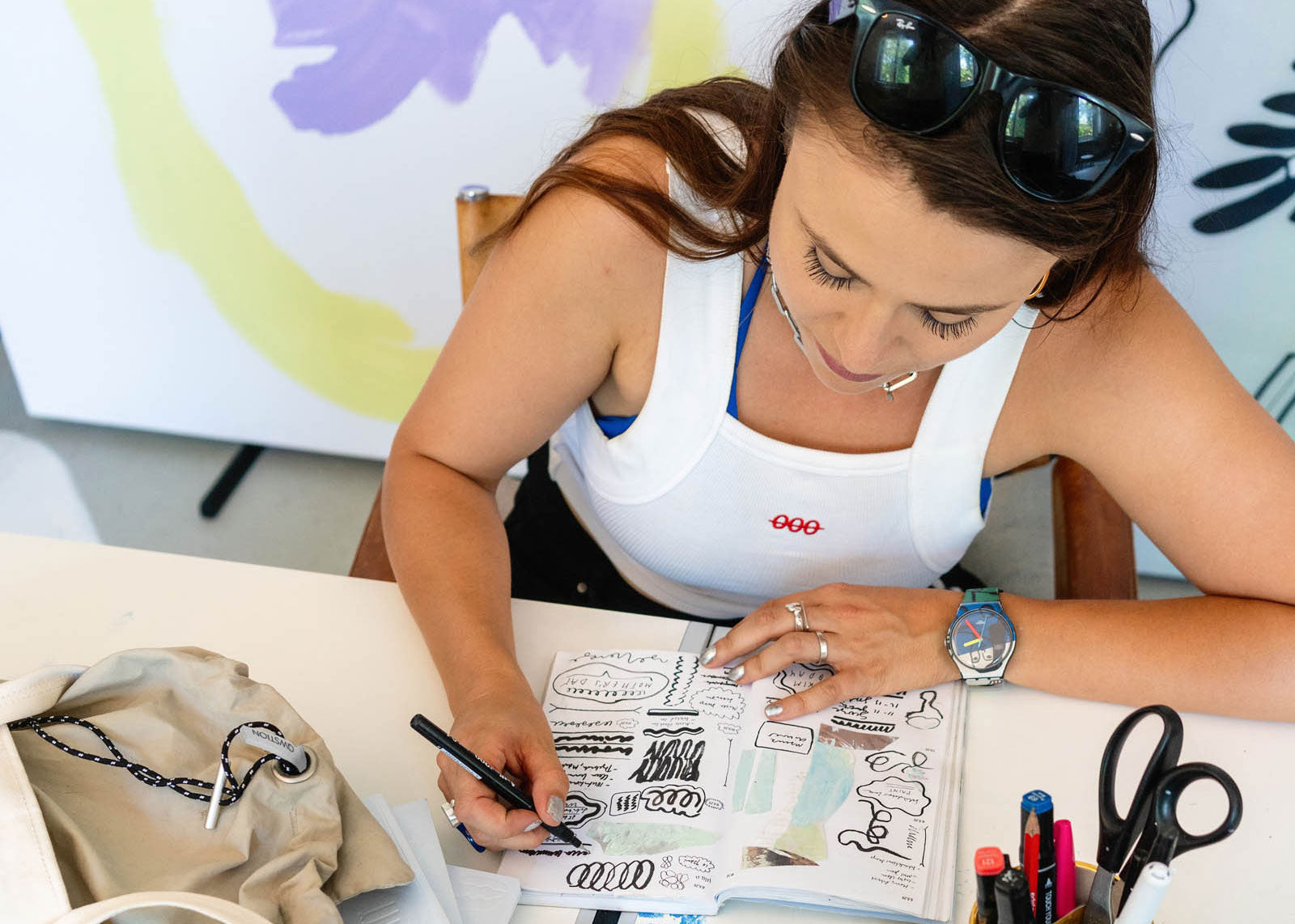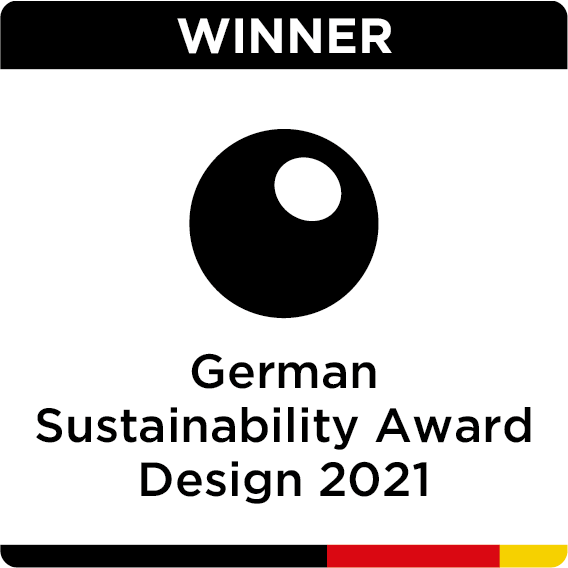Sustainability: The ability to sustain
What do we mean when we talk about “sustainability"? The circularity of our products? Our responsibility in regards to the supply chain? Durability and longevity of our goods? Does durable equal sustainable? Or is it the attitude of each and every one of us to consume more consciously, inform ourselves, so we can make fact-based decisions and better consider which companies we support?
Overwhelming stuff. And honestly - we don't have the one and only answer, but we can share our learnings.
Let’s begin with a definition, according to the oxford dictionary: 'Sustainability: The use of natural products and energy in a way that does not harm the environment. The ability to continue or be continued for a long time.
It seems many things labelled ‘sustainable’ today don’t hold up – from sustainable housing to sustainable fossil fuels to sustainable plastics and sustainable fashion, just about anything has been marketed to make us feel good about it, while actually extracting resources and contributing to climate change.
What originated as a scientific term is now a word we see everywhere but understand less and less.
At QWSTION we’ve been avoiding the word ‘sustainability’ at QWSTION, inspite of its continued relevance. We feel ’sustainable’ is not something we can be today – rather, a goal we can aim for in the future. We therefore have been focusing on our responsibility – as an organisation, as individuals, as human beings – to direct our actions towards becoming more sustainable.
What it means for us at QWSTION
With QWSTION we wanted to create a platform to investigate, learn about and design supply chains, materials and ultimately products. We wanted to understand the issues in order to learn how to best avoid them, and we learned that plastic is a huge part of the problem. Its production is fuelling the overconsumption of textiles: as plastic based materials like polyester and polyamide are a lot cheaper than natural fibres, they became today’s dominant materials. As of 2025 around 70% of all textile products are made from plastics, and production still continues to grow.

For more information on fibres – check out our latest Made Transparent episode.
The Plastic Problem
In 1988 the United Nations General Assembly endorsed the establishment of the Intergovernmental Panel on Climate Change (IPCC). Its initial task was to prepare a regular review on the state of climate change science. Which includes, the social and economic impact of climate change, and potential response strategies. Since, the IPCC has delivered six Assessment Reports, in the form of comprehensive scientific reports about climate change produced worldwide.
In the one of 2021 the IPCC unmistakably names the most effective recommendation: to immediately reduce the production and use of plastic. Moving away from petrochemical plastic production – and keeping fossil fuels in the ground – are key steps in fighting climate change.
Why does this matter for the production of everyday bags and goods? Our journey into the rabbit hole of issues linked to plastic resulted in identifying the following 6 key issues:
1. The Carbon Cycle
Nearly every piece of plastic begins as a fossil fuel, and greenhouse gases are emitted at each stage of the plastic lifecycle: Fossil fuel extraction and transport, plastic refining and manufacture, managing and burning plastic waste, and plastic’s ongoing impact once it reaches our oceans, waterways, and landscape.

2. Methane (CH4)
Huge Methane emissions occur during fossil fuel extraction. A recent study concludes, that todays Methane emissions are 30-120 times greater than pre-industrial era - half of which (82 MT) resulting from oil and gas operations. This is especially relevant, as Methane is an 84-times more powerful green house gas than CO2.

3. Auxiliaries
10’000 additives that make plastic useable in the ways we know today. Plastics contain additives that determine its properties, including stability, color, and flexibility. Most of the thousands of these chemicals aren’t regulated, but it’s clear that some of those additives, which end up in recycled plastics as well, are dangerous for humans and other organisms.

4. Microplastic
None of the mass-produced plastics biodegrade in any meaningful way; however, sunlight weakens the materials, causing fragmentation into particles known to reach millimeters or micrometers in size. Microplastics can be found literally everywhere on our planet today. A study conducted by Oklahoma State University and published in the journal Nature Medicine in March 2025 found that the concentration of microplastics in human brains analysed during the study had increased by approximately 50% in the past 8 years.

Plastics never really go away. They just break down over and over and over again until they become smaller and smaller from sunlight and other environmental factors. Dianna Parker, National Oceanic and Atmospheric Administration
5. Recycling is Downcycling
Before 1980, plastic recycling was negligible. Since then, only nonfiber plastics have been subject to significant recycling efforts - meaning in our field of textiles: it`s not happening. For nonfiber plastics, on the basis of limited available data, the highest recycling rates in 2014 were in Europe (30%) and China (25%), whereas in the United States, plastic recycling has remained steady at 9% since 2012.

Recycling bottles to make textiles - which a lot of brands claim to be sustainable - is actually making the problem worse: In this case Polyester or Nylon is taken from an already incomplete loop, and the possibility of it being recycled is further prevented by making fibre products and adding other substances to it in the process. In the best case it delays the waste - but directly results in even more new plastic having to be fed into the primary cycle.

6. Expansion
An estimated 24% of all plastics ever produced are currently in use. Between 1950 and 2015, cumulative waste generation of primary and secondary (recycled) plastic waste amounted to 8300 Mt. Of this, approximately 9% have been incinerated and 7% have been recycled, only 10% of which (0.7%) have been recycled more than once.Around 60% of all plastics ever produced were discarded and are accumulating in landfills or in the natural environment. Plastic production is estimated to continually grow by 3,5%-4% annually in the coming decade.

The history of plastic
How did we reach this point where plastic is omnipresent in our daily lives? The plastic boom begann with WW2. It created high demands for materials, and the U.S. found itself caught between two ways of making plastics. One involved making the chemical from grain alcohol, the other from petroleum. Oil interests vied with the farm bloc over government contracts to feed the new plastic machine. The federally backed petroleum boom obstructed any possibility of a plant based plastics industry. Grain harvests were deemed too irregular, too beholden to the seasons, to floods and droughts, and thus to price fluctuations. By the 1950s, the government had sold its wartime rubber factories to private interests.
At the grocery store, plastics picked off paper item by item: the eggcarton, the bread bag, the meat tray, and, eventually though not easily, the grocery sack, says the science writer Susan Freinkel in her book ‘Plastic: A Toxic Love Story’.
Historically, fossil-carbon feedstocks have been something of a manipulated market, given the number and variety of government subsidies: assistance with technology transfer, tax breaks, grants, soft loans, price controls, and, as described here, wartime contracts – which has shaped plastics’ pricing and production in turn. The plastics industry hasn’t had to account for the true costs of its operations, either, including the price of what it has burned, landfilled, injected, spilled, or incinerated.
Today’s dilemma
The capitalist system exerts a strong influence and major leverage lies within the incentives it provides. Plastic is heavily subsidized, and cost is ‚externalized‘, which makes it cheap - as prices for plastic products do no reflect the true cost. Inspite of all the knowledge about the negative impacts of plastic we have today, production and consumption is globally rising. It’s a distorted market: the huge companies, which became huge through huge subsidies, are making huge profits, and investing huge sums in preventing change. On a political level through powerful lobbying, on a consumer level by diverting attention from the issues, making us believe plastics are actually great and sustainable, because they ‚can be recycled‘.
In 2009 the 20 largest economies (which is estimated to account for 80% of all greenhouse gas emissions) agreed to phase out fossil fuel subsidies, but unfortunately the opposite has happened. The International Monetary Fund, concludes that production and burning of coal, oil and gas is subsidised more than ever before – by $7tn in 2022, which equals around 7% of global GDP.
Our choices make a difference
As mentioned at the beginning: sustainability is a big topic, with no easy answers. However, we firmly believe that education, innovation and collaboration are more important than ever. Let’s share our learnings and develop solutions together. Let's use plants instead of plastic. Let’s ask ourselves honestly: what can we do today, tomorrow, and in the long term?
Keep being curious,
Your QWSTION team
P.S.
Let us know if you would be interested in more in-depth articles like this one? Write to us at wecare@qwstion.com.
Sources
CIEL, CENTER FOR INTERNATIONAL ENVIRONMENTAL LAW PLASTIC & CLIMATE: THE HIDDEN COSTS OF A PLASTIC PLANET, (2019), https://www.ciel.org/plasticandclimate/
BEYOND PLASTICS - THE NEW COAL: PLASTICS & CLIMATE CHANGE (2021)
https://static1.squarespace.com/ static/5eda91260bbb7e7a4bf528d8/t/616ef29221985319611a64e0/1634661022294/REPORT_The_New-Coal_Plastics_and_Climate-Change_10-21-2021.pdf
NATURE - Preindustrial Carbon-14 indicates greater anthropogenic fossil Methane emissions (2020), ttps://www.nature.com/articles/s41586-020-1991-8h
IEA - Methane and Gas, Methane Tracker 2020, https://www.iea.org/reports/methane-tracker-2020/methane-from-oil-gas
NATURE - Methane emissions from upstream oil and gas production in Canada are underestimated (2021), https://www.nature.com/articles/s41598-021-87610-3
ACS PUBLICATIONS – Deep Dive into Plastic Monomers, Additives, and Processing Aids, https://pubs.acs.org/doi/abs/10.1021/acs.est.1c00976?source=cen &
SCIENCE ADVANCES – Production, Use and Fate of all plastics ever made (2017),https://www.science.org/doi/10.1126/sciadv.1700782
www.nature.com/articles/s41591-024-03453-1






